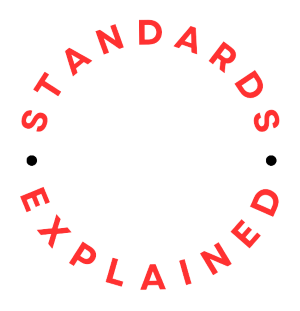Purpose
The purpose of an internal audit of an organization claiming compliance with an international standard, such as ISO standards, serves several important objectives.
Assessment of Conformity
Internal audits provide an opportunity to assess the organization’s conformity with the requirements of the international standard. This includes verifying whether the organization has implemented the necessary processes, procedures, and controls as specified by the standard.
Identification of Nonconformities
Internal audits help identify any nonconformities or discrepancies between the organization’s current practices and the requirements of the standard. This allows the organization to address gaps in its compliance and take corrective actions to rectify deficiencies.
Continual Improvement
Internal audits contribute to the organization’s continuous improvement efforts by identifying areas for enhancement and optimization. Through the audit process, organizations can identify opportunities to streamline processes, enhance efficiency, and improve overall performance.
Risk Management
Internal audits assist in assessing risks associated with non-compliance with the international standard. By identifying potential risks and weaknesses in the implementation of standard requirements, organizations can proactively manage risks and mitigate potential negative impacts on operations and reputation.
Validation of Certification Readiness
For organizations seeking certification or maintaining certification to the international standard, internal audits serve as a validation of readiness. By conducting internal audits, organizations can assess their preparedness for external audits conducted by certification bodies and ensure compliance with certification requirements.
Enhancement of Organizational Culture
Internal audits promote a culture of accountability, transparency, and compliance within the organization. By demonstrating a commitment to adherence to international standards, organizations foster trust among stakeholders and demonstrate their dedication to quality and excellence.
Documentation and Record-keeping
Internal audits generate documentation and records of audit activities, findings, and corrective actions. These records serve as evidence of the organization’s compliance efforts and provide a basis for tracking progress over time.
Management Review and Decision-making
Internal audit findings inform management reviews and decision-making processes within the organization. By providing insights into areas of strength and opportunities for improvement, internal audits enable informed decision-making and strategic planning.
Alignment with Business Objectives
Internal audits ensure that the organization’s processes and practices align with its business objectives, plan and strategic goals. By verifying compliance with international standards, organizations can demonstrate their commitment to meeting customer expectations, enhancing competitiveness, and achieving sustainable growth.
Overall, the purpose of an internal audit of an organization claiming compliance with an international standard is to verify conformance, drive continuous improvement, manage risks, and demonstrate commitment to quality and excellence. Internal audits play a crucial role in ensuring that organizations uphold the principles and requirements of international standards and maintain a culture of excellence and compliance.

Internal Auditor
You will need to appoint an Internal Auditor. This needs to be someone who is objective, balanced and precise (especially with the written word). This person can be anyone in your organization who possesses these attributes.
The Internal Auditor needs to verify that processes, expected practices and procedures are documented, implemented and understood. The Auditor should also require confirmation that each process, expected practice and procedure aligns with the specified requirements; in other words, the purpose is to ensure that the Management System is performing effectively and that the organization is demonstrating a commitment to continual improvement.
Accuracy in Reporting
It is essential that the Internal Auditor is completely honest about performance and effectiveness and how it is supporting the organization. You might be involved in transitional arrangements to move your organization from where it was (i.e. your baseline) to where it needs to be. No useful purpose is, however, served by painting a rosy picture when there are issues still to be resolved.
It is normal to have to take some corrective actions. A professional, business-like approach is needed, where you identify and highlight areas of attention and issues. You can say what you plan to do to correct or resolve them. An all-important principle is to aim for continual improvement.
Supporting Evidence
Supporting evidence for auditing an organization’s conformity with an international standard takes various forms to provide comprehensive verification. Examples of supporting evidence may include the following.
Documented Procedures and Policies
- Written procedures and policies demonstrating how the organization plans, implements, and controls processes in accordance with the requirements of the standard.
- Examples: Quality manuals, procedures manuals, policy documents, work instructions.
Records and Documentation
- Records of activities, transactions, and decisions that provide evidence of adherence to standard requirements.
- Examples: Records of meetings, training records, customer complaints, corrective actions, internal audits, management reviews.
Completed Forms and Templates
- Forms and templates used to capture data and information related to compliance with standard requirements.
- Examples: Inspection checklists, audit checklists, nonconformance reports, risk assessment forms, competency assessment forms.
Training and Competency Records
- Records of employee training, qualifications, and competencies related to standard requirements.
- Examples: Training certificates, competency assessments, employee qualifications records, job descriptions.
Internal Audit Findings and Reports
- Reports and findings from internal audits conducted to assess compliance with standard requirements.
- Examples: Internal audit reports, audit findings, corrective action plans, verification of corrective actions.
Management Review Meeting Minutes
- Minutes and records of management review meetings where compliance with standard requirements is discussed and evaluated.
- Examples: Management review meeting minutes, action plans resulting from management reviews, records of decisions made during meetings.
Evidence of Corrective and Preventive Actions
- Documentation demonstrating the identification, investigation, and resolution of nonconformities and the implementation of preventive actions.
- Examples: Corrective action reports, preventive action plans, evidence of corrective action effectiveness.
Monitoring and Measurement Records
- Records of monitoring and measurement activities conducted to assess the performance and effectiveness of processes in meeting standard requirements.
- Examples: Monitoring logs, measurement records, calibration certificates, product testing results, process performance metrics.
Supplier and Vendor Documentation
- Documentation from suppliers and vendors demonstrating their conformity to standard requirements when applicable.
- Examples: Supplier audits, supplier agreements, certificates of compliance, supplier performance records.

Customer Feedback and Satisfaction Data
- Feedback and data from customers regarding their satisfaction with products, services, and interactions with the organization.
- Examples: Customer surveys, complaints logs, customer satisfaction scores, feedback forms.
Change Control and Revision History
- Documentation demonstrating the control and management of changes to processes, procedures, and documentation related to standard requirements.
- Examples: Change control records, revision history logs, documentation control procedures.
Evidence of Regulatory Compliance
- Documentation demonstrating compliance with relevant regulatory requirements that align with or supplement the international standard.
- Examples: Regulatory filings, permits, licenses, certificates of conformity, regulatory inspection reports.
Continual Improvement Initiatives
- Documentation of continual improvement initiatives undertaken by the organization to enhance conformity with standard requirements.
- Examples: Improvement projects, Kaizen events, quality improvement plans, innovation records.
Documentation of Supplier and Customer Communication
- Records of communication with suppliers and customers related to compliance with standard requirements and quality expectations.
- Examples: Supplier communication logs, customer correspondence, supplier quality agreements.
Evidence of Management Commitment
- Documentation demonstrating leadership commitment to compliance with standard requirements and continuous improvement.
- Examples: Policy statements, management directives, memos, organizational announcements.
These examples illustrate the diverse forms that supporting evidence can take when auditing an organization’s conformity with an international standard. The key is to ensure that the evidence collected provides a robust and comprehensive basis for verifying compliance and demonstrating adherence to the respective standard’s requirements.
Self-audit tool
You can assess your organization’s conformity with the requirements of any management system standard using our self-audit tool. Download your free copy from here (.pdf).
